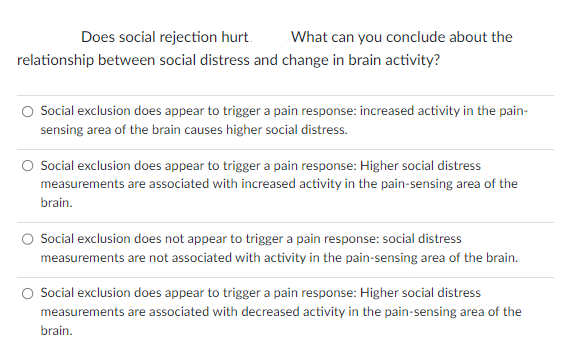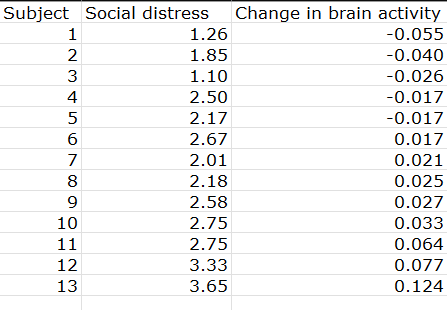ship between social distress and change
We often describe our emotional reaction to social rejection as “pain.” A clever study asked whether social rejection causes activity in areas of the brain that are known to be activated by physical pain. If it does, we really do experience social and physical pain in similar ways. Subjects were first included and then deliberately excluded from a social activity while changes in brain activity were measured. After each activity, the subjects filled out questionnaires that assessed how excluded they felt. Here are data for 13 subjects.
The explanatory variable is “social distress” measured by each subject’s questionnaire score after exclusion relative to the score after inclusion. (So values greater than 1 show the degree of distress caused by exclusion.) The response variable is change in activity in a region of the brain that is activated by physical pain.
create a scatterplot


Trending now
This is a popular solution!
Step by step
Solved in 2 steps with 1 images







